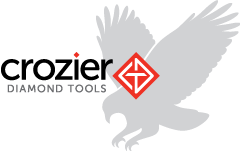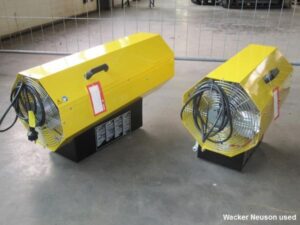As an employer of construction workers, you need to cover safety procedures with your employees to promote
an accident-free environment. Safety procedures may seem obvious to some people and less obvious to others.
Remember, not every person has the same job experience or training, so you should cover safety practices with
everyone.
Electric saws can cause a number of injuries, including hand and eye injuries. Here are some basic safety
rules you should cover with your employees before they handle an electric saw.
Wear Safety Equipment
Even the most cautious individual could get injured by an electric saw-especially if the device is
damaged. To prevent injuries among your employees, require everyone to wear safety gear while they operate
electric saws.
Recommended safety gear includes:
- Safety glasses. Workers who handle a saw should always wear glasses or goggles that protect
their eyes from loose debris. Employees should use safety glasses that fit securely and comfortably so the
glasses don’t slip off. - Hearing protection. Your employees should wear either earplugs or earmuffs while operating an
electric saw. Hours of exposure to loud power tools can cause hearing loss if they don’t wear proper ear
protection. - Gloves. Gloves can prevent loose materials from injuring employees’ hands. Gloves also minimise
vibrations from the saw, allowing your employees to stay steady as they work with the saw. - Respirator. If a worker handles an electric saw for prolong periods, he or she may benefit from
using a full-face respirator. This device protects employees’ lungs from inhaling dust or other airborne
particles.
Most employers provide their workers with these types of protective gear. If your employees are
responsible for bringing their own safety gear, instruct them on proper use.
Use the Right Blade
Electric saws come in various sizes and models. Before your workers use electric saws, they should check
that the saws have the right size of blades attached. Employees should never use blades bigger or smaller
than needed for the project.
Each electric saw has a maximum rotation per minute (RPM) and designated direction of rotation. Workers
should make sure the blade speed doesn’t exceed the maximum RPM indicated on the electric saw. They should
also make sure the blade only rotates in the designated direction before operating the saw.
Check the Saw for Damage
A damaged blade that breaks during use could eject hot pieces of steel and injure your workers. Before
operating an electric saw, employees should thoroughly inspect the saw for damage.
Some potential damages may include:
- Loose handles
- Bent or broken blades
- Missing blade teeth
If a saw is damaged, mark it as unsafe so other workers avoid using it as well. Inspect for damages even
on new saws.
Avoid Lock-In and Kickback
Both lock-ins and kickbacks are user errors that can cause loose materials to injure the operator. If
employees use the electric saw properly, they shouldn’t experience a lock-in or a kickback.
Kickbacks occur when the saw blade jumps back toward the operator. A worker may feel a kickback if he or
she puts the blade back into an existing cut. You can avoid kickbacks in these situations by running the
blade at full speed before entering existing cuts.
A lock-in occurs when a work piece shifts, pinches the saw blade and jerks the saw away from the operator.
Workers should keep work pieces securely clamped to a steady object, such as a table, to prevent the work
piece from shifting.
If you notice an employee struggling with kickbacks or lock-ins while operating the saw blade, instruct
him or her on how to avoid these issues in the future.
Use these tips to keep you and your employees safe when operating electric saws. If you make safety a
priority, you can prevent injury and avoid unnecessary accidents.

